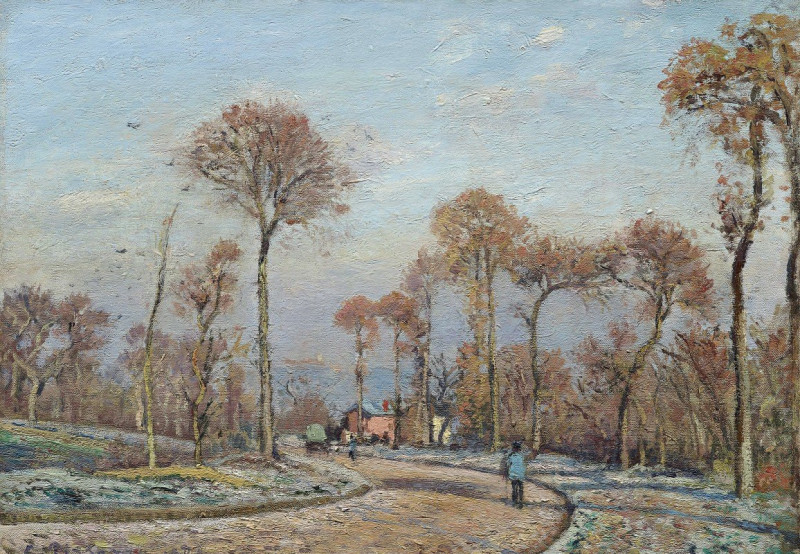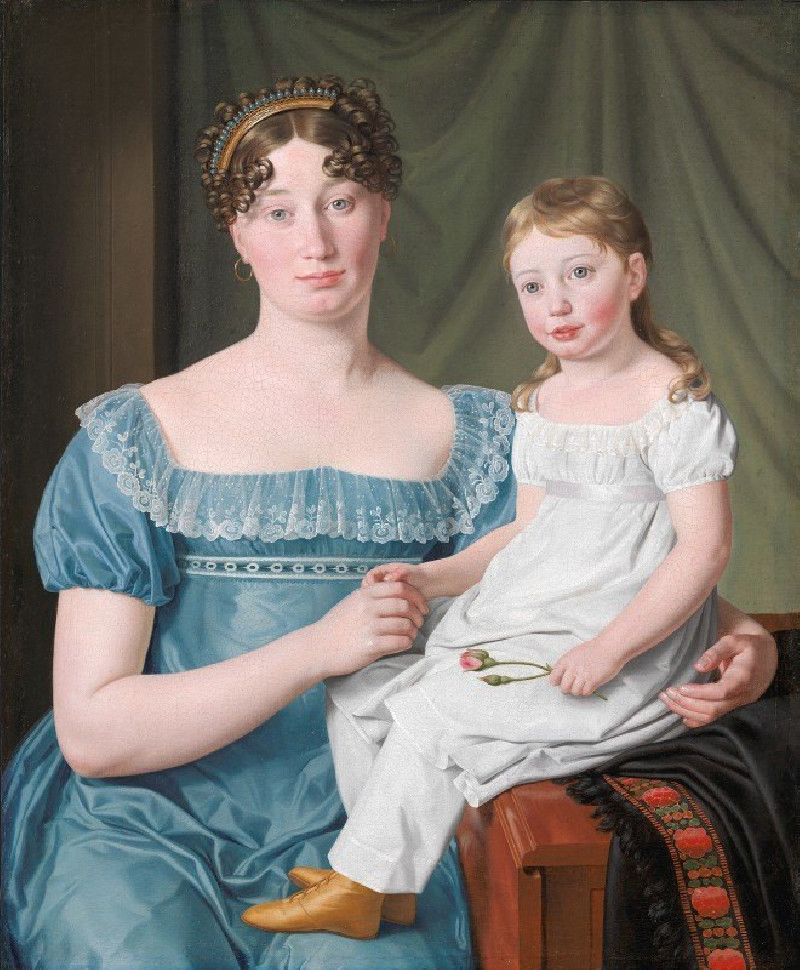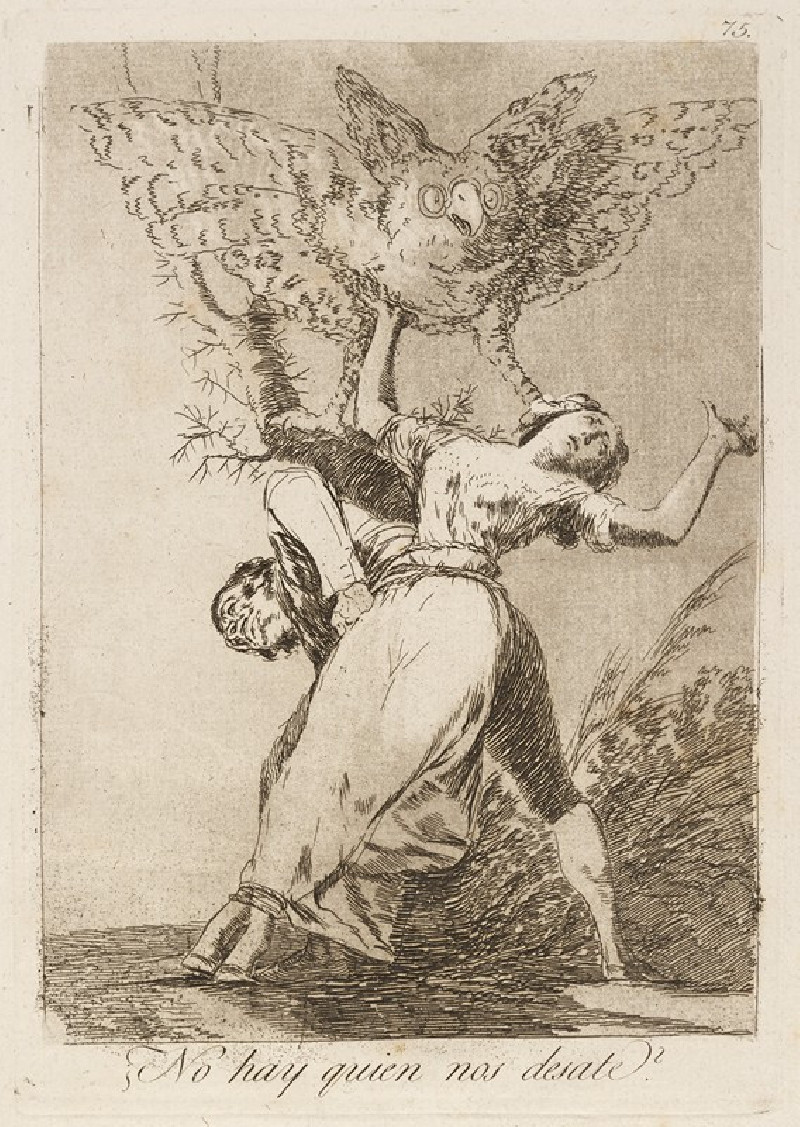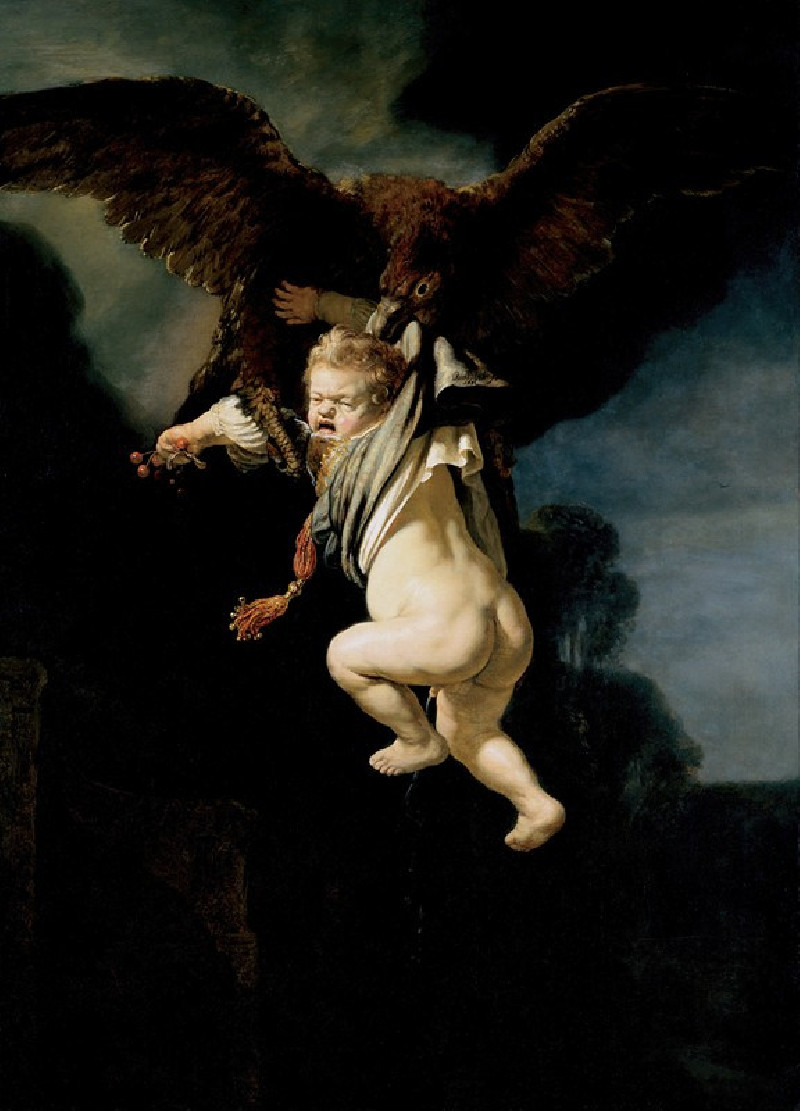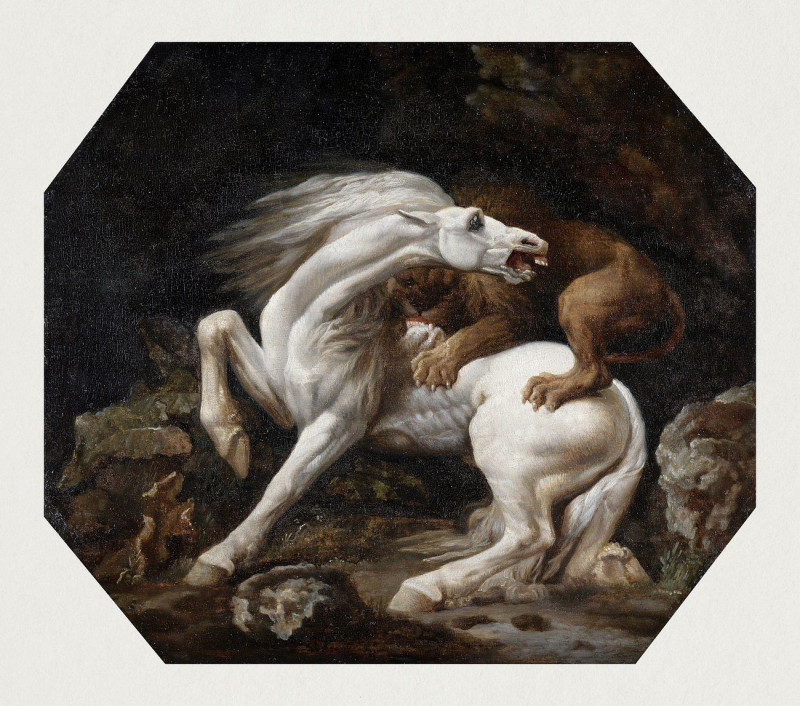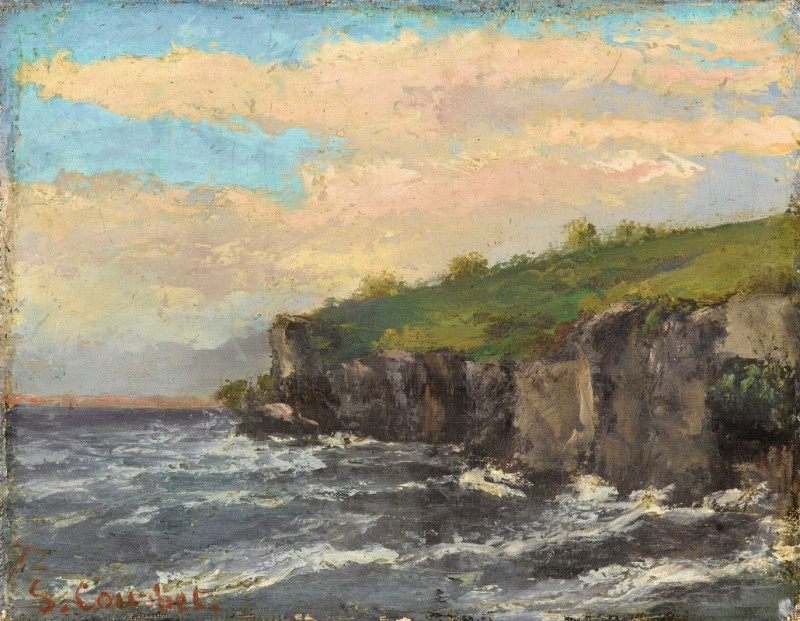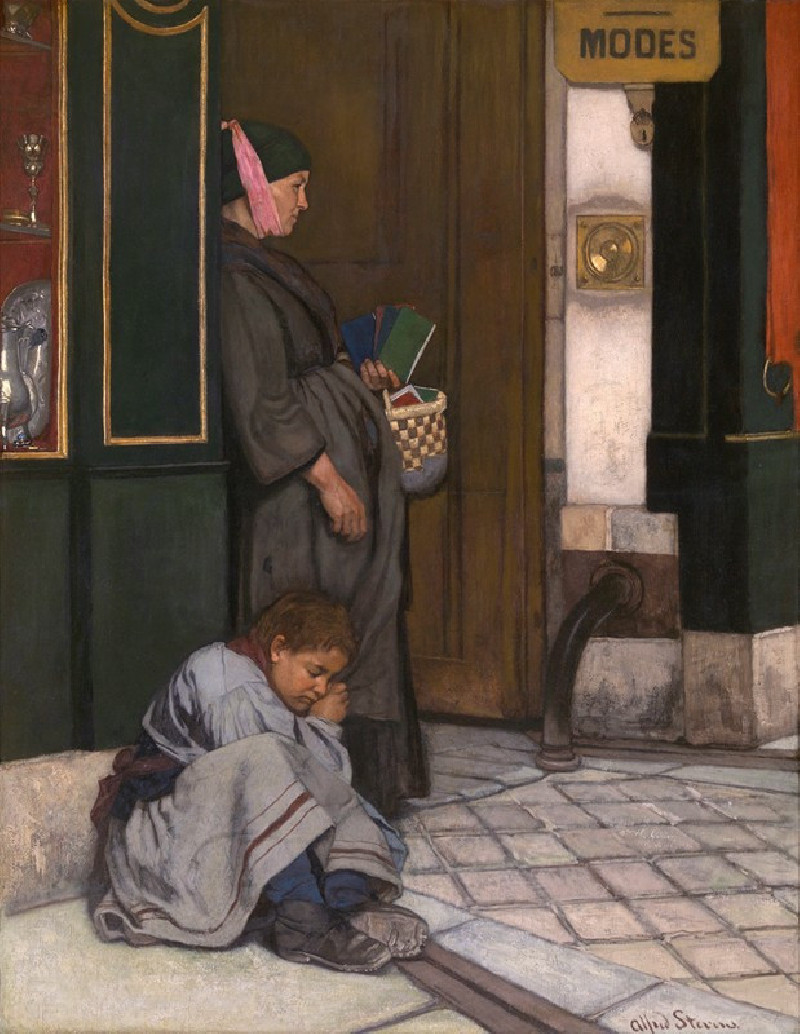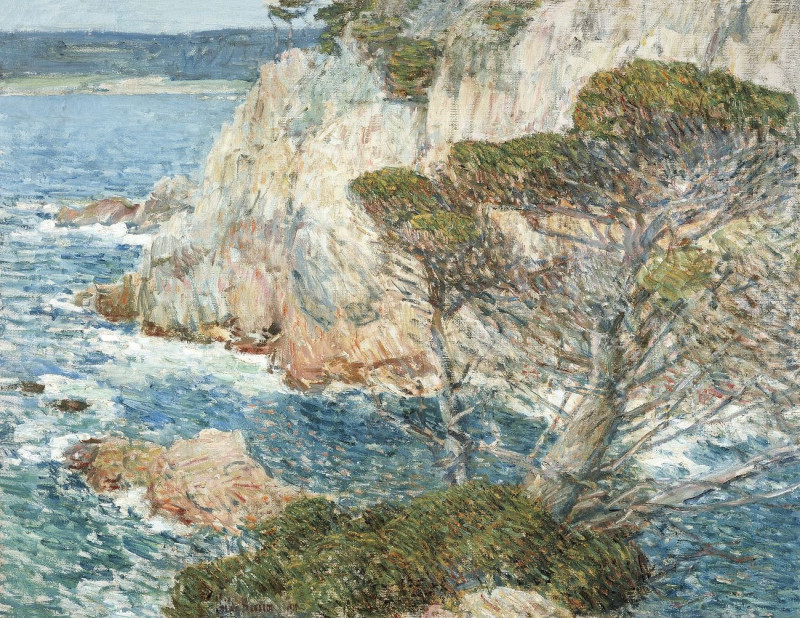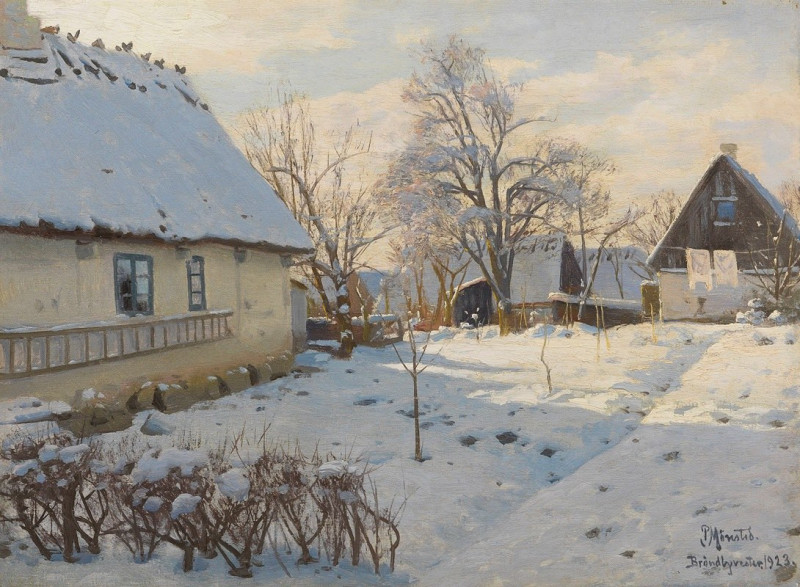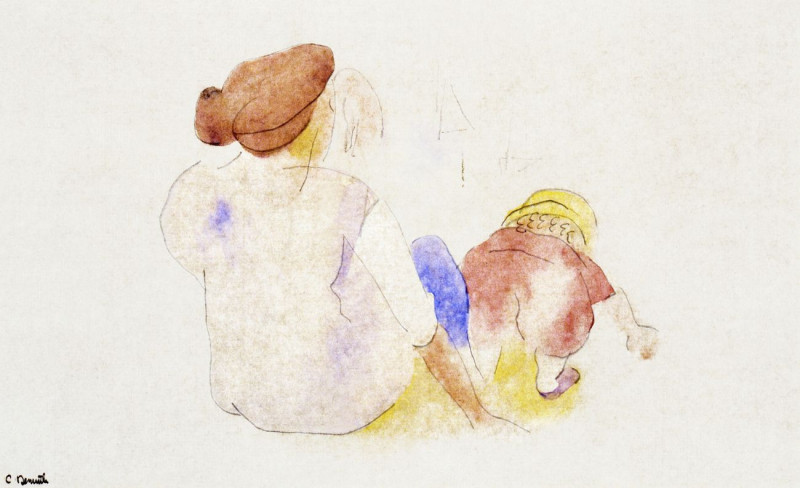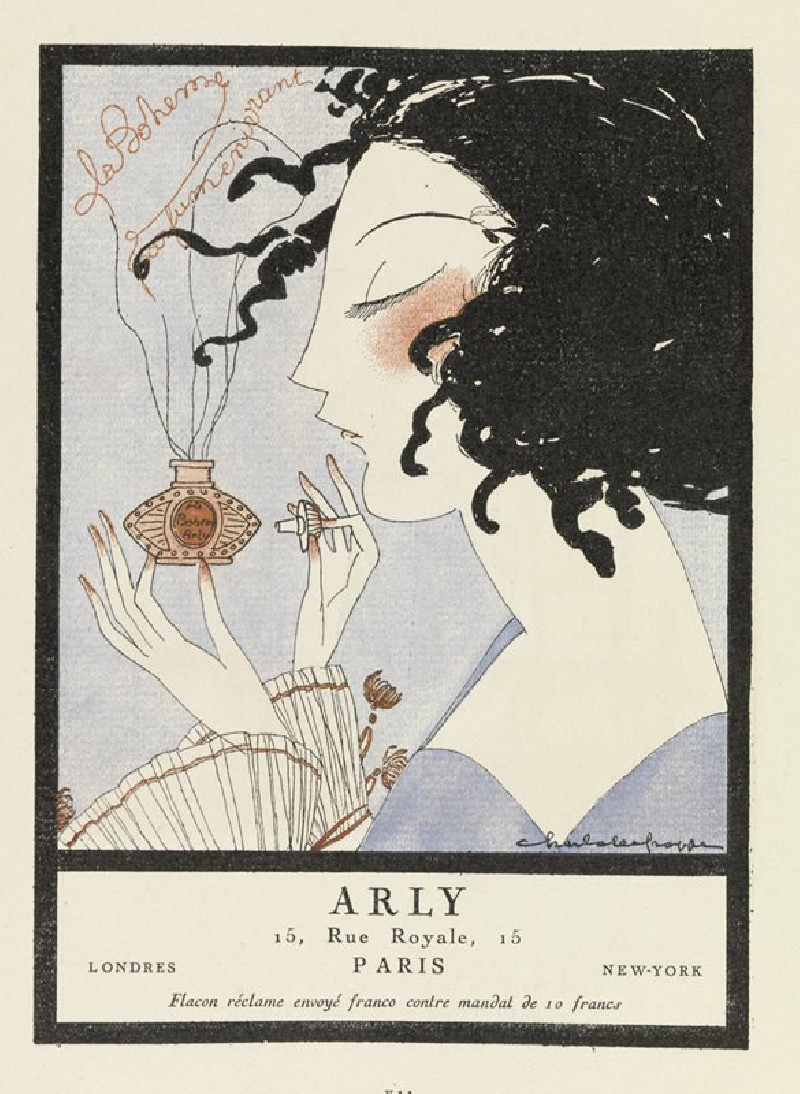The Road to Versailles, Louveciennes,Morning Frost (1871)
Technique: Giclée quality print
Recommended by our customers
More about this artwork
As visitors enter this exhibition, they are greeted by the serene and frost-touched vista painted by Camille Pissarro, a master of the Impressionist movement. "The Road to Versailles, Louveciennes, Morning Frost" captures an ethereal winter morning, where soft light bathes the landscape with a quiet glow, enhancing the tranquil solitude that characterizes Pissarro's work.In this painting, the road bends gently through the scene, drawing the viewer’s eye towards a small farmhouse settled in the distance. The road, dusted with morning frost, reflects the early light, creating a path that not only guides the traveler but also the viewer’s gaze deep into the composition. This technique engages the viewer, inviting them on a visual journey across the chilly landscape.Tall, slender trees line the road, their branches highlighted with the delicate frost, suggesting the crispness of the air and the quietude of the early hour. The sparse foliage allows a glimpse of the sky's soft blues and gentle grays, reminiscent of the cold yet comforting winter days. Notably, Pissarro’s use of soft, blurry brush strokes imbues the scene with a sense of impermanence and fluidity, hallmarks of the Impressionist style.Small figures, possibly local villagers, are seen in various areas of the scene, each engaged in their solitary morning routines. These human elements add scale and life to the painting, bringing a human connection to the natural beauty surrounding them.
Delivery
Returns
Blessed are they who see beautiful things in humble places where other people see nothing. — Camille Pissarro
Camille Pissarro (1830-1903) was born on St.Thomas (now the US Virgin Islands) to a Portuguese father and a Dominican mother. He went to Paris to study art at Ecole des Beaux-Arts. He was an early pioneer of pointillism and neo-impressionism and later became a mentor of many famous impressionist painters including Cezanne, Manet, Renoir, and Gauguin. His paintings depicted rural and urban French landscapes and lifestyle. Many of his works politically captured images of peasants and laborers. Today, he is considered the father of impressionism.

